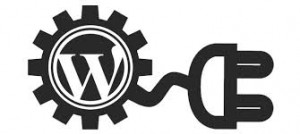How to Start Developing Your Own WordPress Plugin
Posted on Jun 11 2014 by in Blog
Are you in need of a specific feature on your WordPress site? That is where WordPress plugins can come in handy. There are thousands of WordPress plugins that can be added to your installation to add extra features or functionality. Some of these plugins provide features that add to the user experience of your site while others provide certain administrative features. After searching through the available plugins, if you cannot find the exact feature you are looking for then you may want to create your own WordPress plugin. If you have some intermediate knowledge of PHP, CSS, and HTML, then you should find the creation of a WordPress plugin a fairly straight forward process. Here is an overview of how to start developing your own WordPress plugin.
Planning Your Plugin
Obviously your plugin is going to require some thought. The fact that you are making a WordPress plugin means that you have a specific function you would like it to perform. Write down what your intentions are with your plugin and start considering a name. No two WordPress plugins can share the same name, so it may help to go through the WordPress repository and do a search to see if your name is already taken. The name you choose can include multiple words and should in some way describe or mention the function that it is providing.
Creating the Necessary Files
Once you have decided on a name, the next step is to start creating the files that will make up your plugin. At the very least, your plugin is going to need a single PHP file. This PHP file should have a unique name and typically the name of the plugin is used. You may end up requiring additional files. If you plan on including other PHP files or JavaScript or CSS files with your plugin, then you will need a directory to place them in. Create a directory with the same name as your main PHP file and place all your files inside.
The Header Information
At the top of your main PHP file, you are going to place some basic information so that WordPress can recognize your plugin. At the bare minimum, this will include the name of your plugin; though, it can also include information such as the plugin version, a description, your name, a URL to the official page of your plugin, as well as other information.
Coding Your Plugin
With the header information in place, you can start coding your plugin. Always try to keep your coding as simple and straight forward as possible. There are multiple ways to provide functionality to your plugin. You can either use WordPress plugin hooks or use template tags or both. When you have finished coding your plugin, it is a good idea to test it out. Install it on a test installation of WordPress and ensure your plugin works. Test out every feature and if possible allow other users to try it out.
For specific information regarding the creation of a WordPress plugin it is a good idea to take a look at the official WordPress site and read through the information they provide. They also provide additional resources and help for creating plugins. After your plugin is created, you can choose to upload it to the WordPress repository, distribute yourself, or use it for your own purposes.


